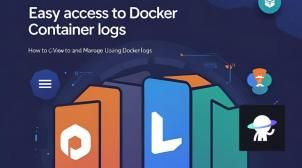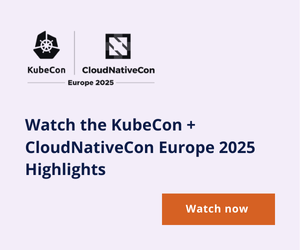-
How Ridgeline Enhanced (And Saved Money) on Their Cloud Security with CloudQuery
Ridgeline, a cloud-native investment management platform, improved infrastructure visibility, automated compliance, and cut cloud costs by over 30% using CloudQuery. By integrating it into their CI/CD pipeline, they scaled to 300+ AWS accounts, expanded resource coverage, and reduced manual overhead—ensuring secure, efficient, and compliant cloud operations.
-
SINGAPORE’S LARGEST BANK MOVES TO OPEN SOURCE WITH MARIADB
Discover how DBS Bank, Southeast Asia's largest bank, successfully migrated mission-critical applications from Oracle to MariaDB, achieving 30-70% cost savings, enhanced flexibility with microservices, real-time data streaming, and robust compliance for its demanding financial services operations.
-
The state of observability in 2025: a deep dive on our third annual Observability Survey
Dive into Grafana Labs' third annual Observability Survey for 2025! Uncover how observability practices are maturing, why traces are gaining traction, the enduring power of open source, the emerging role of AI, and how cost continues to drive tool selection across organizations of all sizes.
-
GitOps vs. DevOps: Key Differences Explained
GitOps and DevOps are often seen as interchangeable, but they serve distinct purposes within the software delivery lifecycle. This article breaks down their differences, tools, workflows, and where they overlap. Learn how GitOps focuses on infrastructure automation using Git as the source of truth, while DevOps represents a broader cultural shift aimed at collaboration and continuous delivery. Discover how combining both approaches can streamline development, enforce consistency, and boost deployment reliability.
-
Is It Time to Migrate? A Practical Look at Kubernetes Ingress vs. Gateway API
Still battling Kubernetes Ingress complexities? Discover why it's time to migrate! This guide unpacks the limitations of traditional Ingress and reveals how the Kubernetes Gateway API, implemented by Calico Ingress Gateway with Envoy proxy, offers a standardized, role-aware, and feature-rich solution for secure, streamlined traffic management.
-
The Cost of Doing Nothing: How Workflow Chaos Wastes 20+ Dev Hours a Month
Is workflow chaos secretly costing your dev team 20+ hours a month? Discover how inconsistent PRs, endless merge conflicts, and slow onboarding silently kill velocity, and learn practical fixes to standardize your workflows for peak productivity and happier developers.
-
The 3 Es of Diskless Kafka BYOC
Explore three ways to buy Kafka in the cloud—Multi-Tenant SaaS, Single-Tenant SaaS, and Bring Your Own Cloud (BYOC)—and discover why Diskless BYOC offers significant economic, enforcement, and enterprise discount advantages for organizations operating Kafka at scale, challenging traditional fully-managed solutions.
-
Diskless Kafka is the Tide, and it’s Rising
Discover KIP-1150 Diskless Topics now live in Aiven Kafka BYOC, enabling Apache Kafka on AWS, Google Cloud, and Azure to write directly to object storage. Learn how this innovation slashes costs by up to 80%, eliminates operational toil, and maintains 100% Apache Kafka compatibility, ensuring zero vendor lock-in and a single logical cluster for all streaming workloads.
-
What are the benefits of decentralized AI infrastructure
Harness AI without sacrificing control! Discover the critical benefits of decentralized AI infrastructure for enterprises, from ironclad data privacy and sovereignty to enhanced security and compliance, and learn how solutions like Civo's relaxAI are setting new standards for responsible AI deployment.
-
How Spacelift Can Improve Your Infrastructure Orchestration
Discover how Spacelift enhances infrastructure orchestration by streamlining complex workflows, improving governance, and increasing developer velocity. This guide covers Spacelift’s key features—from automated IaC workflows and policy-based access control to drift detection, resource visualization, and self-service infrastructure. Learn how Spacelift helps platform and DevOps teams manage Terraform, Pulumi, Kubernetes, and more with robust security, flexibility, and scalability.
-
Docker Container Logs: How to View & Manage
Easy access to Docker container logs is essential for effective development and debugging. This guide explores how to view and manage Docker logs using the docker logs command, Docker Compose, and Docker Desktop. It also covers where logs are stored, how to clear them, and best practices for centralized logging, log rotation, and structured output. Whether you're just starting with Docker or optimizing a production setup, this article will help you tailor container observability to your needs.
-
Introducing the Anaconda Community Channel: Expanding Your Open Source Arsenal While Maintaining Enterprise Control
Introducing the Anaconda Community Channel – Unlock access to over 16,000 additional open-source packages with the new Community Channel in the Anaconda AI Platform. Designed for enterprises, it offers seamless compatibility with Anaconda’s trusted distribution, all while maintaining governance, security, and compliance. Empower developers, reduce admin overhead, and accelerate innovation—without compromising control. Now available for Business tier customers.
Filter & Sort



















